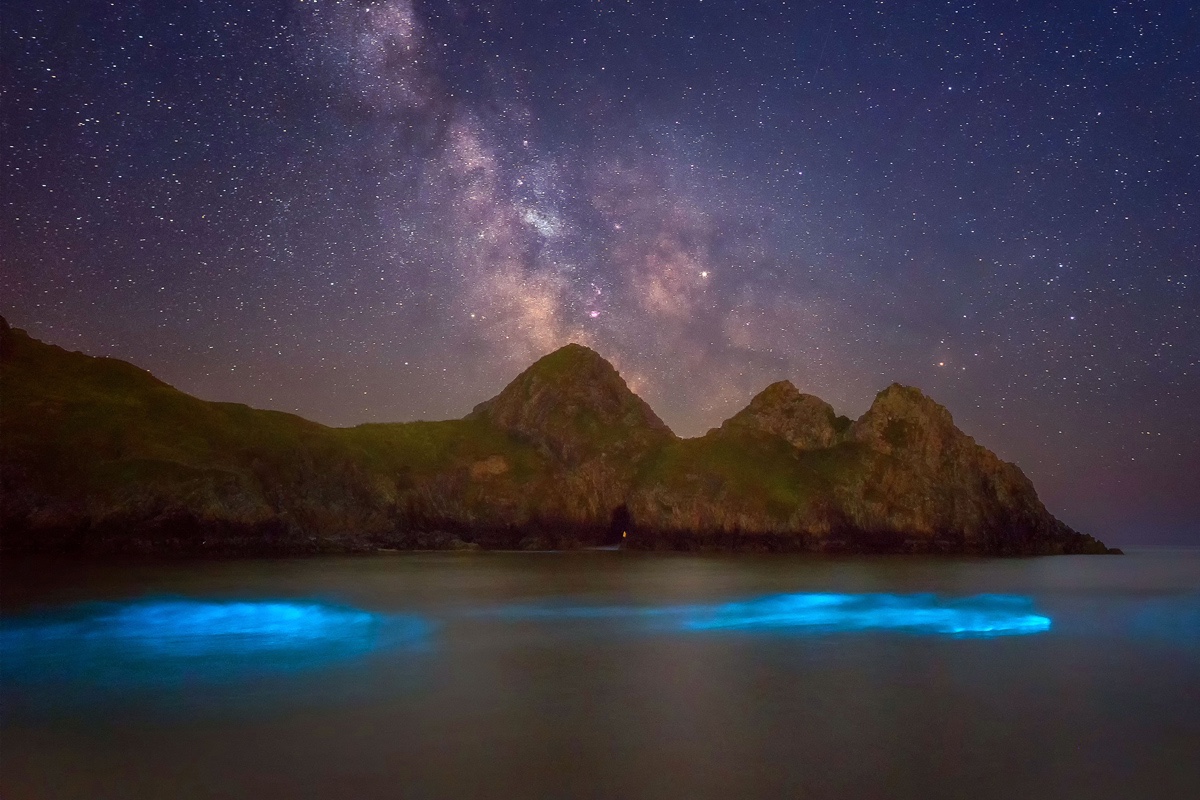Shimmering Sea: Why a Beautiful Blue Glow Lit Up the Coast of Wales

A photographer experienced a magical moment near Swansea, Wales, this weekend as the sea glowed and glimmered an otherworldly blue.
Alyn Wallace, a landscape and astronomy photographer based in South Wales, posted on Facebook a shot of beautiful ocean bioluminescence under the Milky Way taken the night of June 18, calling it "one of the most incredible experiences" of his life.
"Every step and splash I made just lit up with an unreal blue glow," Wallace wrote.
The glow that lit Three Cliffs Bay near Swansea that night came from tiny plankton that emit their own light. Many species of plankton glow, and blue is the most common color for their self-made light; blue is the wavelength of light that travels the farthest through water. But there are some exceptions, according to the Latz bioluminescence lab at the Scripps Institution of Oceanography. For instance, the black loosejaw fish (Malacosteus niger) produces red light. The fish the loosejaw preys on can't detect red light, so this adaptation may allow the loosejaw to use its bioluminescence as a stealthy spotlight. [The 7 Weirdest Glow-in-the-Dark Creatures]
Plankton mostly want to be seen, according to the Latz lab. They use their bioluminescence as a way to startle potential predators, hoping to avoid being scooped up. That's why steps and splashes create the "sea sparkle" that Wallace photographed: Disturbances in the water are interpreted as a threat.
Plankton create their own light by combining a molecule called luciferin with oxygen, often using a catalyst enzyme called luciferase to nudge the chemical reaction along. Different kinds of luciferin and luciferase can create different colors of bioluminescence, ranging from red and orange to green and blue, according to the Latz lab.
Bioluminescence is relatively uncommon on land, but it's the norm in the sea. A recent study published in the journal Scientific Reports found that a whopping 75 percent of ocean animals glow.
Sign up for the Live Science daily newsletter now
Get the world’s most fascinating discoveries delivered straight to your inbox.
Bioluminescence at the surface, visible to the human eye, is a rarer treat, but it has been seen in Wales before. In 2014, photos of blue bioluminescence at Penmon on the isle of Anglesey went viral. Late spring and early summer, when the water is warm, tend to be the most shimmery times for the Welsh coast.
Original article on Live Science.

Stephanie Pappas is a contributing writer for Live Science, covering topics ranging from geoscience to archaeology to the human brain and behavior. She was previously a senior writer for Live Science but is now a freelancer based in Denver, Colorado, and regularly contributes to Scientific American and The Monitor, the monthly magazine of the American Psychological Association. Stephanie received a bachelor's degree in psychology from the University of South Carolina and a graduate certificate in science communication from the University of California, Santa Cruz.









